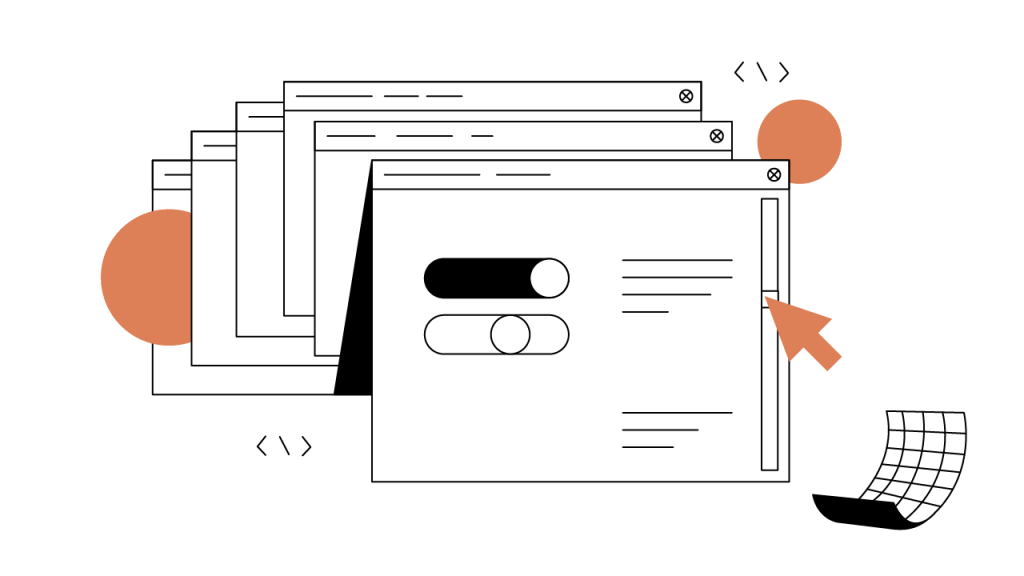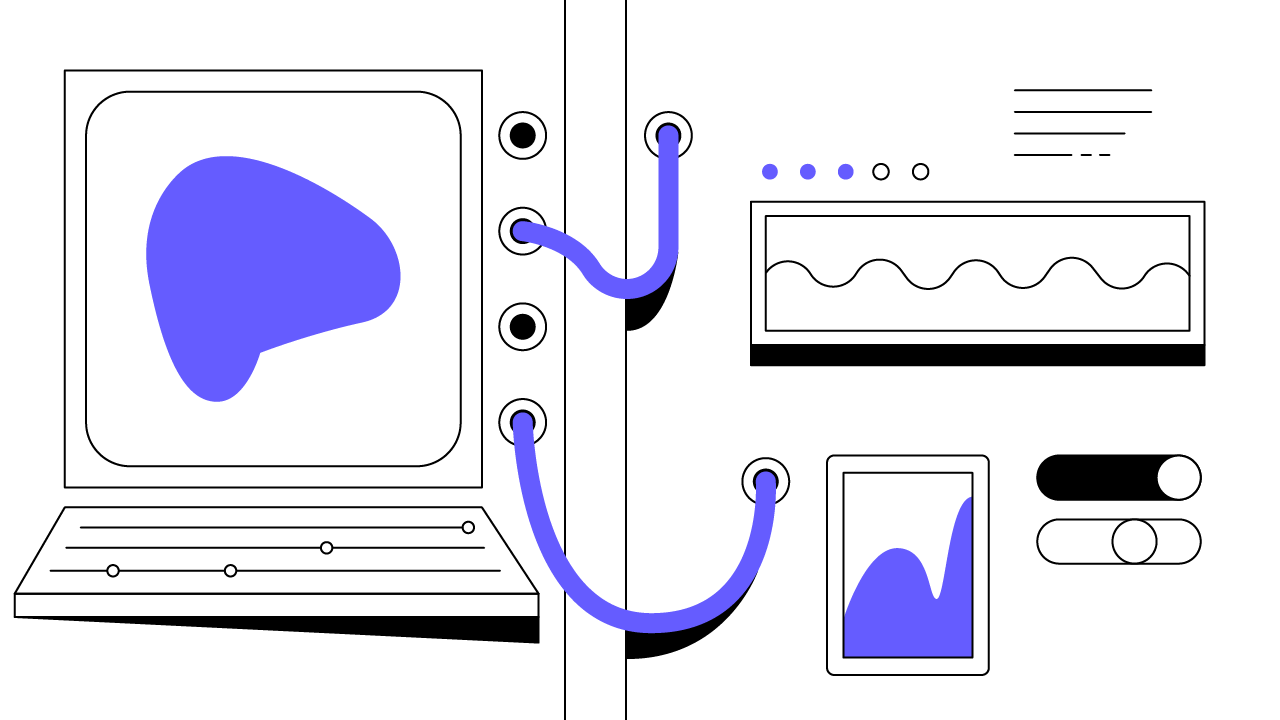Contents
Curve (CRV): How it Works
Curve is one of the most popular platforms in DeFi because it favors stability and composability over volatility and speculation.
By Michael Egorov, CEO, Curve Finance
Updated November 1, 2023 • 4 min read

Summary
Curve is a popular automated market maker (AMM) platform that offers a highly efficient way to exchange tokens while maintaining low fees and low slippage by only accommodating liquidity pools made up of similarly behaving assets. While this approach results in lower fees for the liquidity providers who supply the pools with tokens, Curve incentivizes their participation by integrating with external DeFi protocols and delivering rewards in the form of CRV tokens and interest.
What Is Curve?
Curve is an AMM platform with many similarities to Uniswap and Balancer, but differentiates itself by only accommodating liquidity pools made up of similarly behaving assets like stablecoins, or wrapped versions of like assets such as wBTC and tBTC. This approach allows Curve to use more efficient algorithms, feature the lowest levels of fees, slippage, and impermanent loss of any decentralized exchange (DEX) on Ethereum.
Let’s begin with a quick refresher on how AMMs work and then we can focus on how Curve achieves lower risk and higher efficiency than other AMMs in the DeFi ecosystem.
How Automatic Market Makers Work
Automated market makers allow digital assets to be traded permissionlessly and automatically by using liquidity pools instead of trading between buyers and sellers. At its core, a liquidity pool is a shared pot of tokens. Users supply liquidity pools with tokens, and the prices of the tokens in the pool are determined by a mathematical formula. By tweaking the formula, liquidity pools can be optimized for different purposes. Anyone with an internet connection and some ERC-20 tokens can become a liquidity provider by supplying tokens to an AMM’s liquidity pool. Liquidity providers normally earn a fee (paid by traders who interact with the liquidity pool) for providing tokens to the pool.
Stable Liquidity Pools
Curve was launched in 2020 with the intention of creating an AMM exchange with low fees for traders, while providing an efficient fiat savings account for liquidity providers. By focusing on stablecoins, Curve allows investors to avoid more volatile crypto assets while still earning high interest rates from lending protocols. Compared to other AMM platforms, the Curve model is particularly conservative in that it avoids volatility and speculation in favor of stability.
On AMMs like Curve, liquidity pools are constantly trying to “buy low” and “sell high.” Here’s a refresher on how that rebalancing functions, this time with USD-pegged stablecoins USD Coin (USDC) and DAI. If you were selling DAI on Curve, you would trigger this series of events:
More DAI is added to the pool
The pool becomes unbalanced because there is now more DAI than USDC
The pool sells DAI at a slight discount compared to USDC to incentivize balance
The pool rebalances its ratio of DAI to USDC
By selling DAI at a discount, the pool is trying to restore the pool to its original state. Because assets in the Curve pool are stable to each other in price, trading between them causes minimal volatility compared to other AMM liquidity pools. On AMMs like Uniswap or Balancer, where liquidity pools can be made up of any token, volatility is high. By limiting the pools and the types of assets in each pool, Curve minimizes impermanent loss, an AMM phenomenon in which liquidity providers suffer a loss in token value relative to the market value of that token from volatility in a liquidity pool.
However, impermanent loss is not always negative. Volatility and slippage present opportunities for users who try to profit from entering and exiting a liquidity pool at the right time. By trading off the high risk — and sometimes high reward — aspect of volatility, Curve instead attracts liquidity providers using what’s called DeFi composability. This means you can use what you have invested on the Curve platform to earn rewards elsewhere in the DeFi ecosystem.
Unlike Uniswap or Balancer, Curve doesn’t try to keep the values kept in different assets always equal, or proportional to each other (i.e., balanced). This allows Curve to concentrate liquidity near the ideal price for similarly priced assets (in a 1:1 ratio) to have liquidity where it is needed the most. Thus, Curve can achieve a much higher liquidity utilization than otherwise possible with those assets.
The like-asset approach to AMMs isn’t limited to stablecoins. Tokenized versions of bitcoin (BTC) such as wBTC and renBTC also make up Curve’s liquidity pools. Compared to a stablecoin, bitcoin is highly volatile, but the Curve method still works because tokens in Curve pools don’t need to be stable — they just need to be stable relative to other tokens in the same pool. In other words, wBTC and renBTC can be in the same Curve liquidity pool, whereas wBTC and USDC would not be a functional combination.
Composability: Incentivizing Liquidity Providers
On an AMM exchange such as Uniswap, you can earn fees whenever a trade is made. On Curve, trading fees are lower than they are on Uniswap, but you can also earn rewards from outside of Curve with interoperable tokens.
For example: When DAI is lent out on the Compound platform, it is exchanged for a liquidity token called cDAI, which automatically accumulates interest for the holder. Holding cDAI means you have a right to withdraw DAI from Compound plus interest. Curve users are able to use cDAI in its liquidity pools, thus achieving a second layer of utility and potential earning from the same amount of investment.
The ability to use Compound’s cTokens on Curve exemplifies the composability benefits in the DeFi ecosystem. And Compound is just one example of an external DeFi protocol with which Curve integrates. The protocol also integrates with Yearn Finance and Synthetix in order to maximize incentives for liquidity providers.
CRV Tokens
In August 2020, the Curve protocol started its journey toward decentralized governance by launching a decentralized autonomous organization (DAO) to manage changes to the protocol. Most DAOs are controlled by governance tokens that give voting rights to holders of the tokens. In this case, the Curve DAO is controlled by the CRV token.
The CRV token can be bought as well as earned through yield farming — when you deposit assets into a liquidity pool and earn tokens as a reward. By providing DAI to a designated Curve liquidity pool, you earn the CRV token on top of fees and interest. Yield farming the CRV token increases the incentives to become a Curve liquidity provider, as you not only gain a financial asset, but also ownership of a strong DeFi protocol.
Anyone with a minimum number of CRV tokens that are vote-locked is able to propose an update to the Curve protocol. Updates can include changing fees, changing where fees go, creating new liquidity pools, and adjusting yield farming rewards. Holders vote to reject or accept a proposal by locking up CRV tokens. The longer the CRV token is locked up, the more voting power it has.
Curve is one of the most popular platforms in DeFi because it favors stability and composability over volatility and speculation. Its composable elements make it an interconnected hub of the DeFi ecosystem, and with the CRV token as a governance mechanism, it is an exceptionally decentralized organization that belongs to its users.
Cryptopedia does not guarantee the reliability of the Site content and shall not be held liable for any errors, omissions, or inaccuracies. The opinions and views expressed in any Cryptopedia article are solely those of the author(s) and do not reflect the opinions of Gemini or its management. The information provided on the Site is for informational purposes only, and it does not constitute an endorsement of any of the products and services discussed or investment, financial, or trading advice. A qualified professional should be consulted prior to making financial decisions. Please visit our Cryptopedia Site Policy to learn more.

Author
Michael Egorov
CEO, Curve Finance
Michael Egorov is the CEO at Curve Finance. Before starting Curve, Michael worked on infrastructure tools at LinkedIn and co-founded NuCypher. He has experience as a scientist and physicist, and was a bronze medalist in the 2003 International Physics Olympiad. He graduated from the Moscow Institute of Physics and Technology. Michael was introduced to cryptocurrency in late 2013 and later became a DeFi user starting with Maker in 2018. He began researching liquid staking, which later led him to develop an algorithm for creating deep markets for similarly priced assets. This algorithm became the foundation for Curve, which Michael created in early 2020.
Is this article helpful?


